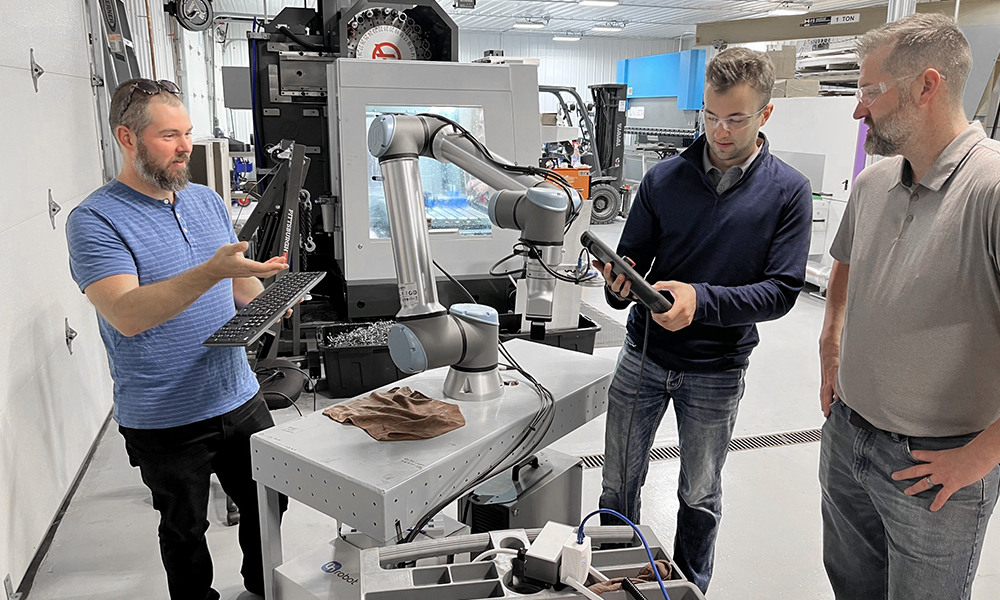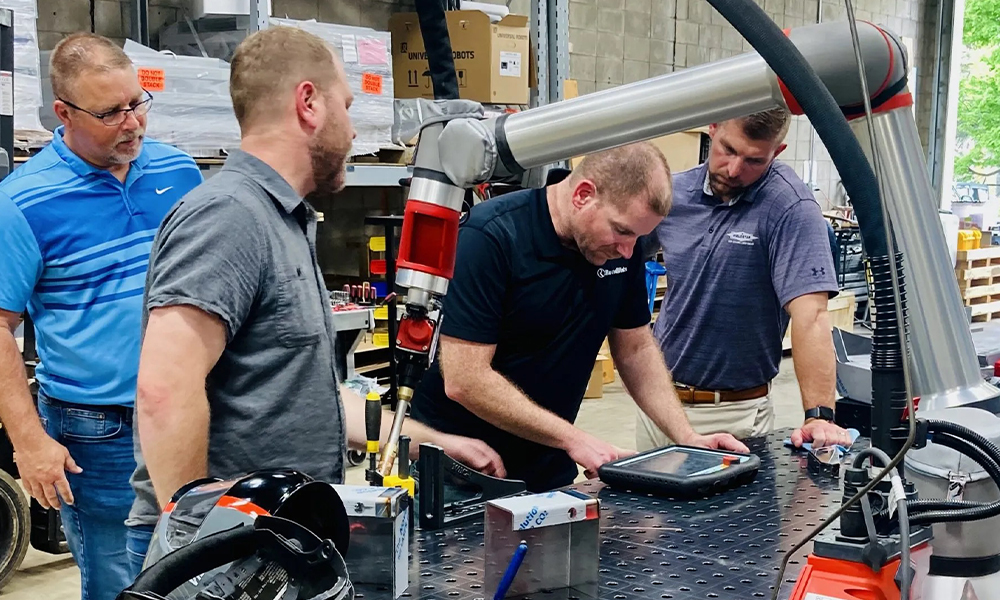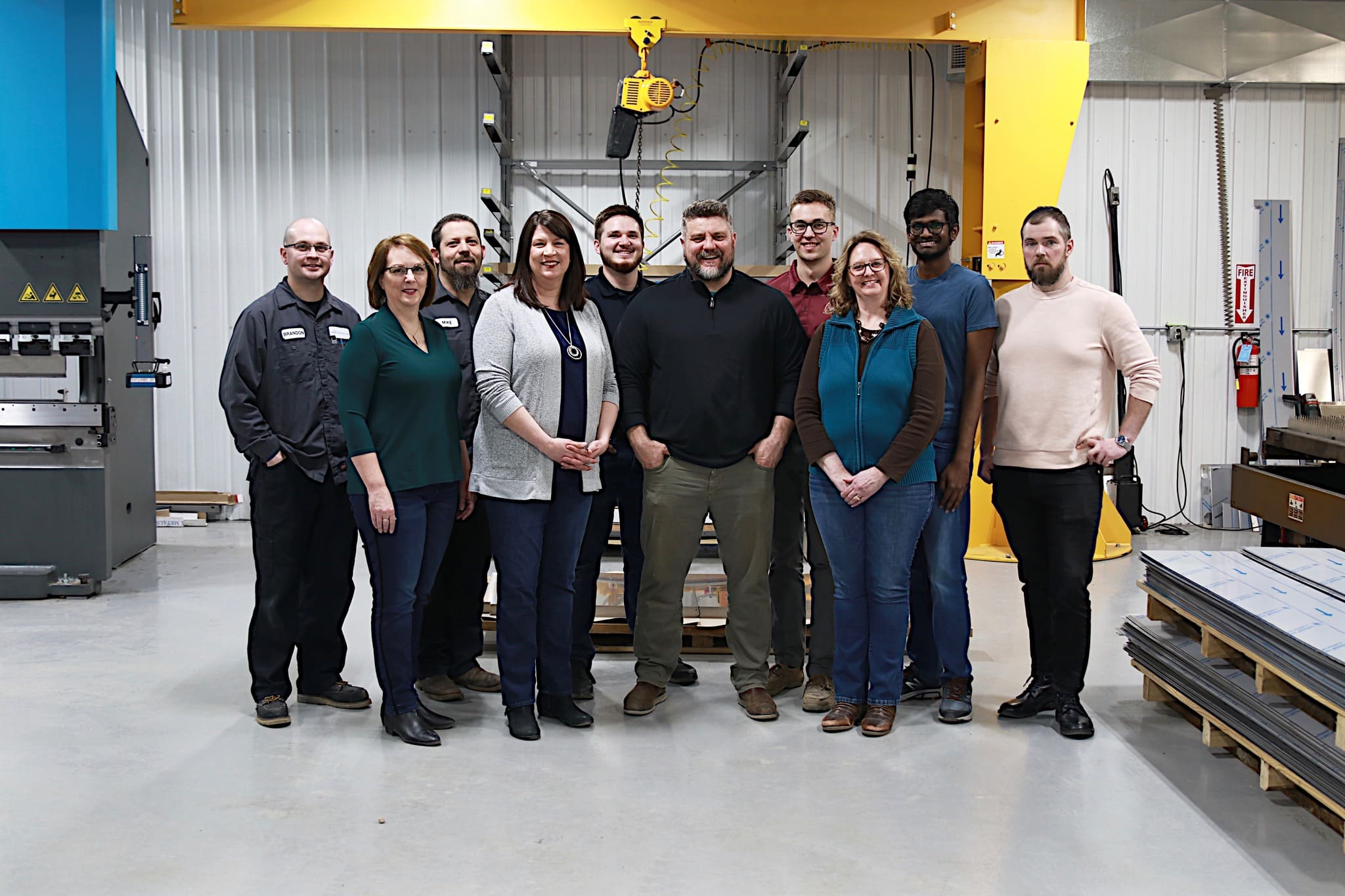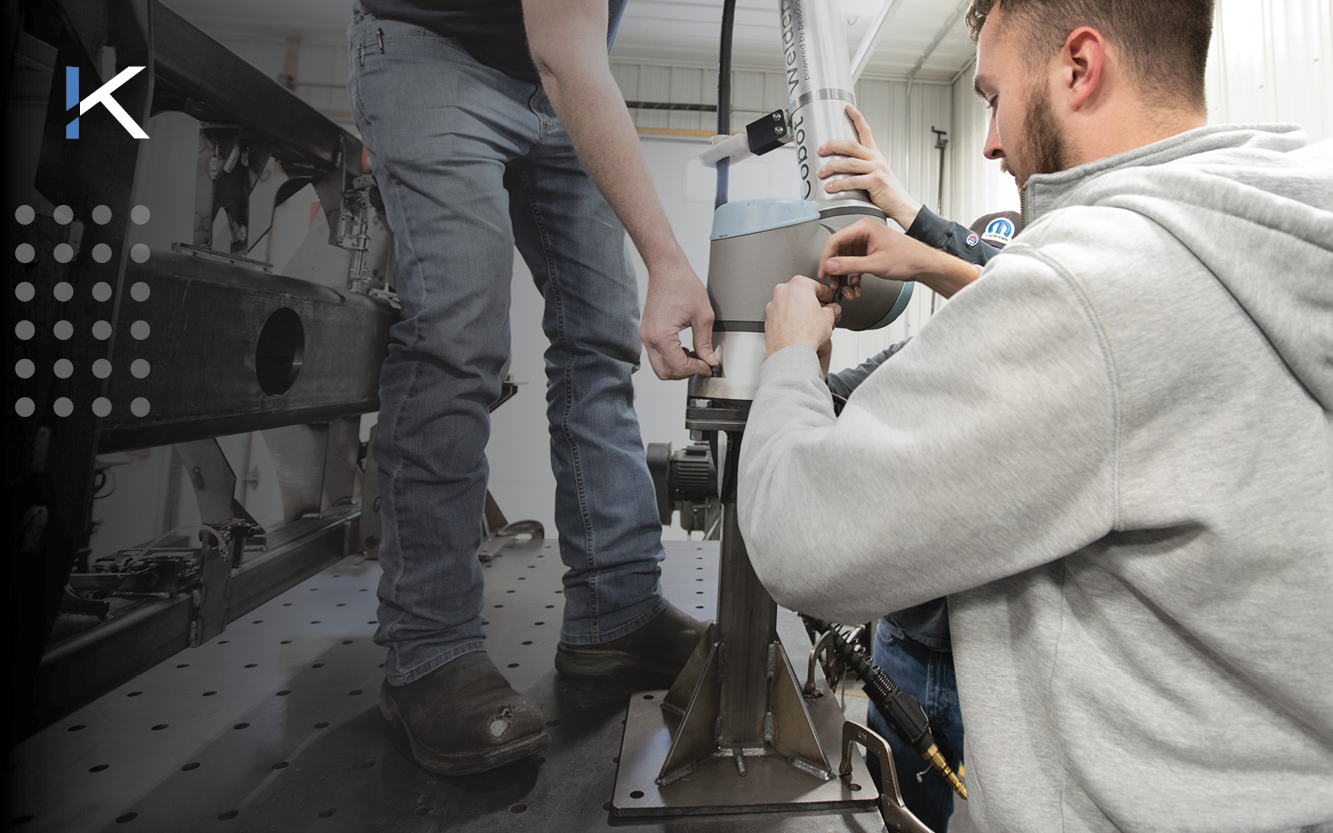Change management in manufacturing can be challenging, especially when adopting robotic automation.
The introduction of new technology often meets resistance, and overcoming that requires careful planning.
Success depends not just on the technology but on preparing and involving your workforce.
This guide outlines why effective change management is crucial and offers practical steps to ensure smooth adoption.
Why Change Management is Critical in Manufacturing Automation ›
The Role of Leadership in Successful Automation Adoption ›
Common Challenges ›
Qualities of Effective Leaders in Automation Change Management ›
Practical Steps for Preparing Teams for Automation ›
Avoiding Common Pitfalls in Change Management ›
How Kinetic Technologies Can Support Your Automation Journey ›
Why Change Management is Critical in Manufacturing Automation
Before diving into the implementation process, it’s essential to understand why change management plays a pivotal role in automation success.
Proper change management addresses both the technological and human elements of new processes.
New Technology = New Processes
Robotic automation doesn’t just introduce new machines—it introduces new ways of working.
Success requires integrating these new processes into the daily workflow. As Mark Barglof explains:
“A robot is a new process that’s being added into a manufacturing facility. In order for that to be successful, we need to take into account the people aspects as well as the technology aspects.”
– Mark Barglof, owner Kinetic Technologies
This means more than just installing a machine; it involves planning, adjusting workflows, and ensuring everyone understands the changes.

The People Factor
Resistance to automation often comes from employees feeling left out or worried about how new processes will impact their jobs.
Effective change management makes employees feel involved and highlights the benefits of automation for them.
The Role of Leadership in Successful Automation Adoption
Leadership sets the tone for automation adoption. Without strong, committed leadership, change initiatives can falter.
Let’s explore the key leadership elements that drive success.
Ownership and Accountability
Leaders must fully own the automation process and clearly articulate its benefits. Barglof emphasizes the importance of ownership:
“There is no element more important than leaders being engaged in the process. If leadership doesn’t own the change, employees won’t either.”
When leaders show they are committed, it builds confidence and reduces hesitation among employees.
Setting the Vision
A clear vision helps employees understand why automation is happening and how it benefits them.
A well-communicated vision aligns everyone and gives employees a sense of purpose in the change process.
Common Challenges
Even with strong leadership, challenges can arise during automation adoption. Recognizing these hurdles helps you plan effectively and avoid potential pitfalls.
Unrealistic Expectations
A common mistake is assuming robots will work seamlessly from the start. Automation requires training, preparation, and ongoing adjustments. Barglof uses a practical analogy:
“You wouldn’t expect a CNC machine to program itself or find its own materials. Robots are tools, and you need to learn how to use them effectively.”
Setting realistic expectations ensures your team understands the effort required for successful integration.
Cultural Resistance
Company culture can make or break an automation project.
Teams that resist change often fear the unknown or worry about how automation will affect their roles. Engaging employees early helps build trust and allows them to voice concerns.
When employees feel included in the process and understand how automation benefits them, they are more likely to support the transition and actively contribute to its success.
Qualities of Effective Leaders in Automation Change Management
Navigating change management successfully requires strong leadership.
Here are the key qualities leaders need to guide their teams through automation adoption.
Commitment to the Process
Leaders who take full ownership of automation projects set the foundation for success.
True commitment means staying actively involved from planning through implementation and beyond.
It’s not enough to delegate tasks and expect results; leaders need to support their teams, address challenges, and ensure everyone understands the goals.
Communication Skills
Clear communication helps alleviate concerns and builds trust.
Leaders should explain how automation improves productivity and job security. Barglof adds:
“It’s not enough to tell people what to do—you need to explain why it matters and how it benefits them.”
Empowerment and Alignment
Ensure everyone, from top leadership to shop floor teams, is aligned.
Empower key team members to take ownership of their part in the process. When leadership supports and trusts their teams, automation projects are more likely to succeed.
Practical Steps for Preparing Teams for Automation
Knowing what to do is crucial, but how you do it makes all the difference. Here are actionable steps to prepare your teams.

1. Align leadership and define goals
• Establish clear goals and responsibilities before starting the automation journey.
• Ensure all leaders understand the problem you are solving and the outcomes you expect.
2. Involve employees early
• Engage shop floor teams during planning to build trust and gather valuable insights. Barglof suggests asking: “What would make this project a success for you?”
3. Provide training and support
• Develop comprehensive training programs to upskill your team.
• Offer ongoing support to address challenges and ensure adoption runs smoothly.
4. Communicate benefits transparently
• Focus on how automation improves productivity, quality, and job security.
• Do not present automation as a replacement for human labor.
Avoiding Common Pitfalls in Change Management
Missteps in change management can lead to wasted investments, frustrated teams, and failed automation projects.
To avoid these outcomes, focus on aligning goals, addressing employee concerns, and managing expectations throughout the process.
Misalignment of Goals
One of the biggest mistakes is introducing automation without a clear understanding of the problem you are trying to solve.
Automation should target specific, high-impact issues that will provide measurable returns. Mark Barglof advises:
“You need to be clear on the problem you’re solving. If there’s no real need, automation won’t deliver value.”
Before starting a project, ensure leadership agrees on the objectives and can articulate them clearly to the team.
Without this alignment, the automation project can lose direction, leading to ineffective solutions and wasted resources.
Neglecting the Human Element
Automation isn’t successful on its own; its success depends on the people who operate and support it.
Ignoring employee concerns or failing to involve them in the planning process creates resistance and undermines adoption.
Listen to your team, address their questions, and actively involve them in designing the new processes. Providing clear communication and practical training helps employees feel valued and empowered.
When employees see automation as a tool that makes their work easier and more productive, they are far more likely to embrace it.
Unrealistic Expectations
Assuming robots will instantly solve productivity challenges can lead to disappointment. Automation requires preparation, training, and ongoing adjustments.
Set realistic expectations for how long it will take to achieve full integration. Be prepared to troubleshoot challenges and support your team through the learning curve. Patience and persistence ensure your investment pays off.
How Kinetic Technologies Can Support Your Automation Journey

At Kinetic Technologies, we go beyond providing robotic solutions; we offer the comprehensive support needed to navigate change management effectively.
From initial goal-setting to full-scale implementation, we ensure that your leadership stays aligned and your employees remain engaged throughout the process.
Our commitment to thorough training and ongoing support equips your team with the knowledge and confidence to integrate automation successfully.
By understanding your unique challenges, we help you develop a sustainable automation strategy that drives long-term success.
FAQ
What factors should I consider when selecting a welding robot integrator?
When choosing a welding robot integrator, consider their experience in your specific industry, technical capabilities, track record of successful projects, and their ability to customize solutions to your needs. Also, evaluate their certifications and the quality of post-installation support.
How can a welding robot integrator help improve ROI?
A welding robot integrator improves ROI by ensuring efficient integration, reducing downtime, and optimizing the robot’s performance to match your specific production goals. Their expertise helps you get the most out of your investment.
How can customization in welding automation improve ROI?
Customization allows the automation system to be tailored specifically to your production needs, which increases efficiency, reduces waste, and minimizes errors, all of which contribute to a faster and higher ROI.
What factors contribute to a quick return on investment (ROI) for welding robots?
Key factors include rapid integration, minimized downtime, customized solutions that fit your exact needs, and strong post-installation support. The expertise of the integrator in handling these aspects directly impacts the speed of ROI.

Mark Barglof is the President and owner of Kinetic Technologies, LLC, a robotic welding integration shop just north of Algona, IA. After serving in the military and earning the U.S. Army Ranger Tab, Mark shifted career paths and dove into the world of manufacturing. His vision is to build a full-service engineering and robotics company that can bring to bear all the advanced engineering tools to support their clients and make their concepts come to life quickly. They are intently focused on robotic welding integrations, robotic welding positioners and fixtures, and custom machine building.




